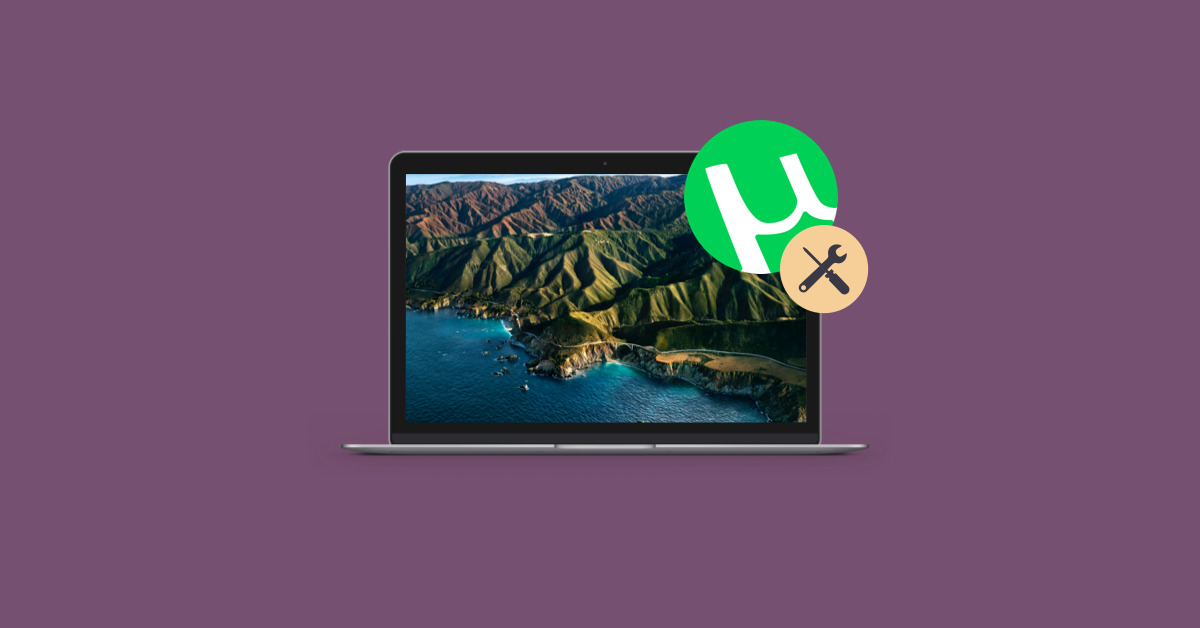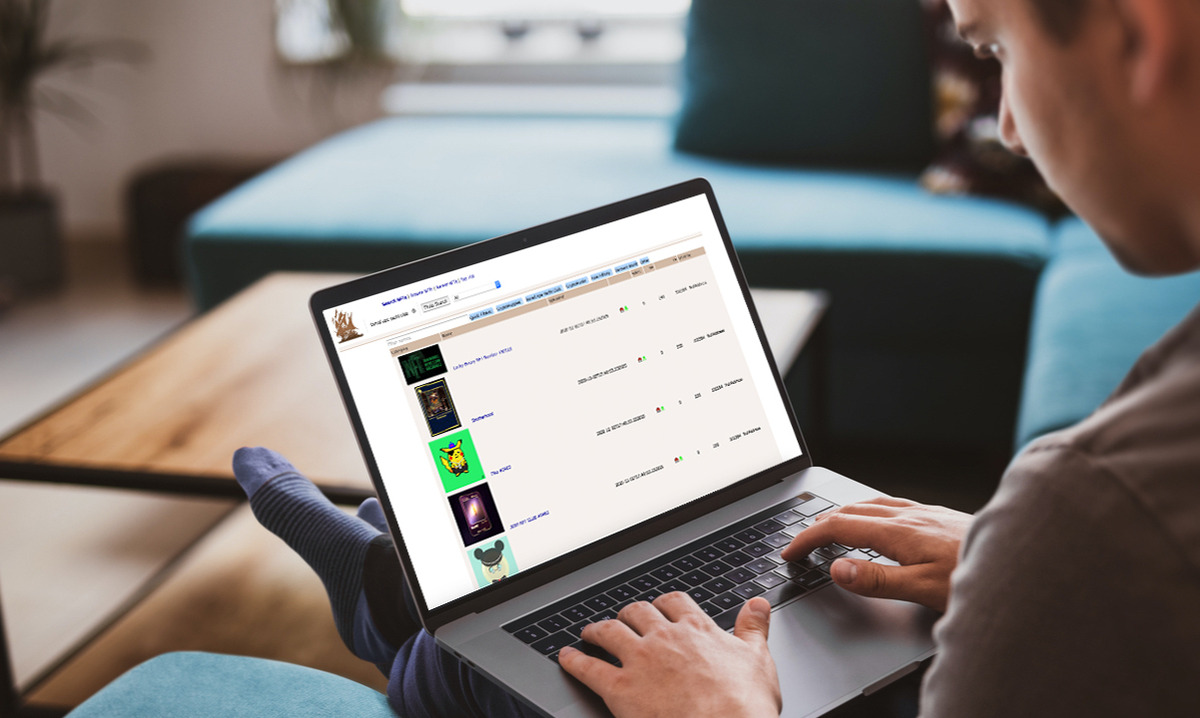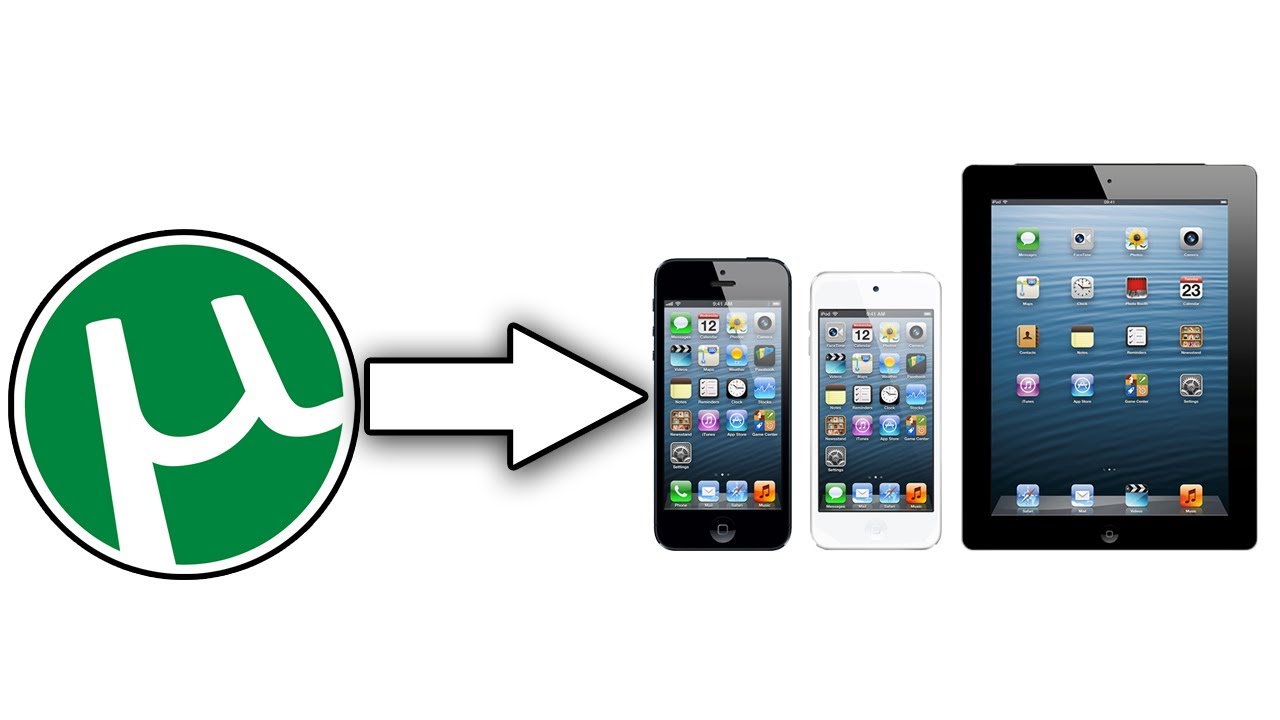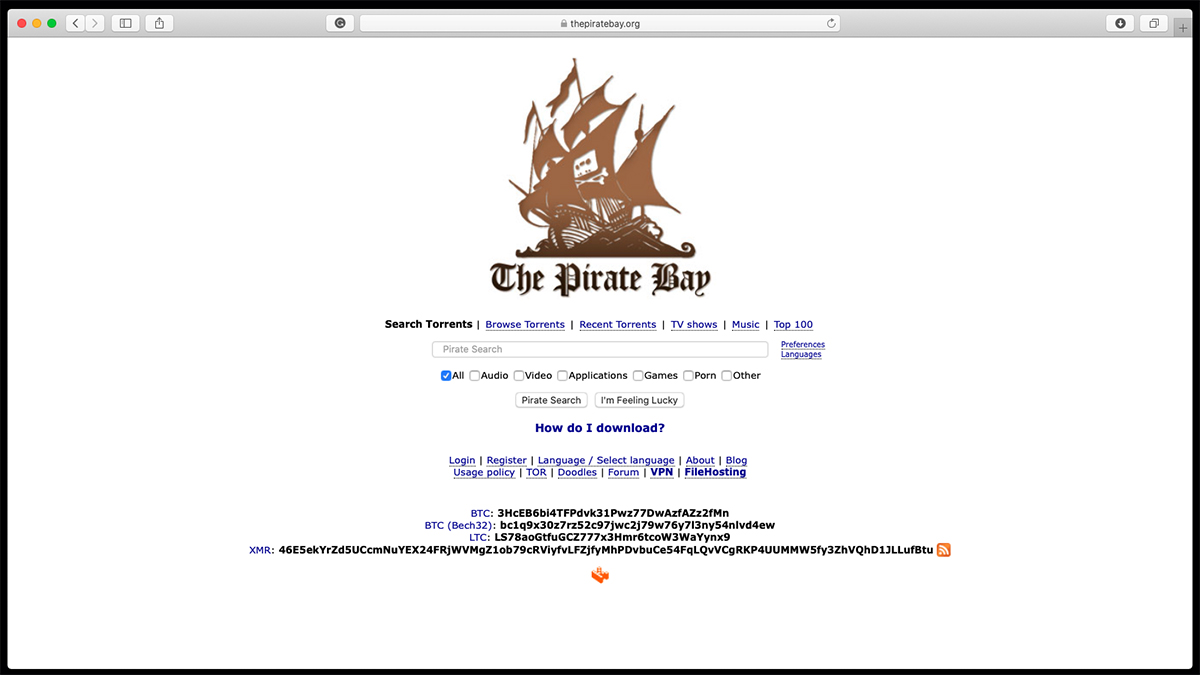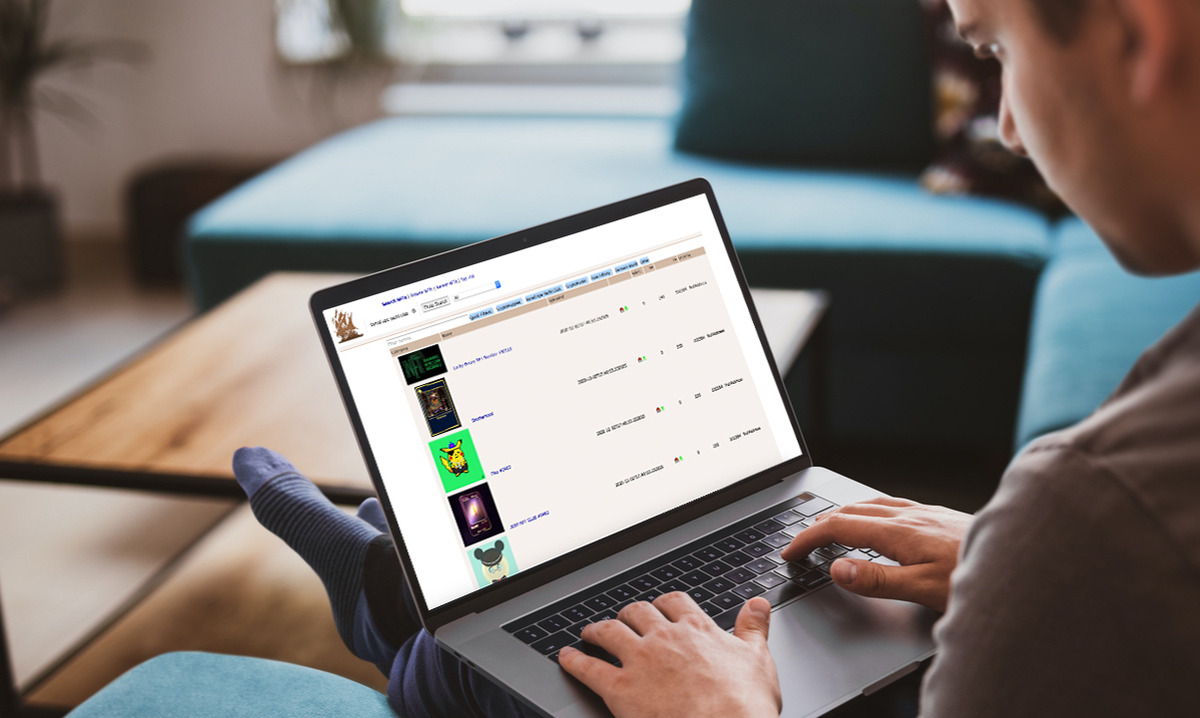Torrenting has become a popular method for sharing and downloading files over the internet, leveraging the power of peer-to-peer (P2P) networking. However, navigating the torrenting world can be complex, with considerations ranging from choosing the right tools to understanding legal implications. This ultimate guide aims to demystify torrenting, providing a thorough overview for both newcomers and seasoned users.
What is Torrenting?
Torrenting is a method of file sharing that utilizes a P2P networking model, allowing users to download and upload files through a decentralized system. Unlike traditional file download methods, which rely on a single server to host files, torrenting distributes the responsibility of hosting files across multiple computers. This system not only speeds up the process of file sharing but also ensures that files are available even if some peers are offline.
Definition of Torrenting
At its core, torrenting involves the transmission of data over the internet in small pieces from multiple sources to a single user. This method uses torrent files or magnet links, which are essentially small files that contain metadata about the files to be shared and the network of peers that are sharing these files. Users employ torrent clients, which are specialized software applications, to read these files and manage the download and upload process.
How Torrenting Works: Peer-to-Peer (P2P) Networking Explained
Torrenting operates on the P2P networking principle, where every participant (peer) shares a portion of the file they’ve downloaded with others, creating a robust and efficient distribution system. When a user decides to download a file, the torrent client connects to a tracker (specified in the torrent file), which helps the client locate other peers who have pieces of the file. The client then downloads different pieces of the file from multiple peers simultaneously, which can significantly increase download speeds.
As users download pieces of the file, they also start uploading these pieces to other users, facilitating a continuous cycle of sharing. This system ensures that as long as there are peers connected and sharing, the file remains available for download, mitigating the risk of files becoming unavailable due to server issues or shutdowns.
However, for those interested in obtaining torrents without engaging directly in P2P sharing, alternative methods exist. Exploring options such as using cloud-based torrent services can offer a solution. These services download the file on your behalf, allowing you to retrieve it directly from their servers. This approach maintains the spirit of efficient file sharing while providing an additional layer of privacy and reducing direct exposure to P2P networks.
For users seeking to leverage the benefits of torrenting without participating in the P2P network, read more on our How To Get A Torrent Without P2P guide. These resources can help navigate the process, ensuring access to the vast world of torrent content while aligning with personal privacy and security preferences.
The History and Evolution of Torrenting
The concept of P2P file sharing existed before torrenting, with networks like Napster pioneering the idea in the late 1990s. However, Napster and similar services faced legal challenges due to copyright infringement issues, leading to the search for more decentralized and anonymous methods of file sharing.
BitTorrent, the protocol behind torrenting, was created by Bram Cohen in 2001 as an answer to these challenges. It introduced a system where files could be shared among peers without requiring a central server, reducing the likelihood of shutdowns and legal issues associated with hosting copyrighted content. The BitTorrent protocol revolutionized file sharing by making it more resilient, efficient, and scalable.
Over the years, torrenting has evolved with the development of new technologies and the introduction of advanced torrent clients that offer enhanced features, such as streaming while downloading, encryption, and integrated search engines. Despite facing scrutiny and attempts to curb its use for copyright infringement, torrenting has remained a popular method for legally sharing large files, including open-source software, academic resources, and creative content.
The evolution of torrenting reflects a broader trend towards decentralized online services, emphasizing user empowerment, privacy, and resilience against censorship. As technology continues to evolve, torrenting remains a key player in the landscape of digital file sharing, adapting to meet the needs of its users while navigating the complex terrain of internet regulation and copyright law.
Understanding Torrent Files and Magnet Links
Torrent files and magnet links are fundamental components of the torrenting process, serving as the roadmap for downloading the files you want through a peer-to-peer network. Let’s delve deeper into the anatomy of torrent files, compare them with magnet links, and understand how to interpret their details.
Anatomy of a Torrent File: Trackers, File Lists, and Metadata
A torrent file is a small file that contains metadata about the files to be shared and the network of participants. Here’s what it typically includes:
- Trackers: Trackers are server addresses that help peers in the network find each other. They play a crucial role in initiating and maintaining the connection between users who share (seed) and download (leech) files.
- File List: This section details the specific files included in the torrent. It lists each file’s name, size, and structure, allowing users to understand exactly what they’re downloading.
- Metadata: Beyond the file list and trackers, metadata includes crucial information like the creation date of the torrent, the name of the application used to create it, and sometimes comments from the creator. Metadata can also contain cryptographic hash values for each piece of the file, ensuring the integrity of the files being transferred.
Magnet Links vs. Torrent Files: Differences and Advantages
While both torrent files and magnet links serve to initiate the download of torrent content, they do so in slightly different ways.
- Magnet Links: A magnet link is a hyperlink containing all the necessary information to start downloading the files directly without needing to download a separate .torrent file first. It includes a hash code, which is a unique identifier for the files and information about trackers. The main advantages of magnet links are convenience and efficiency—they don’t require hosting files on a server, and you can start downloads with a single click.
- Torrent Files: Unlike magnet links, a torrent file must be downloaded to your computer before you can start the torrenting process. Although this might seem like an extra step, torrent files can be beneficial because they provide a detailed breakdown of the file structure and contents before you begin downloading.
How to Find and Read Torrent File Details
Understanding the details within a torrent file can help you verify the content and ensure its integrity before you start downloading. Here’s how to do it:
- Use a Torrent Client: Open the torrent file with your preferred torrent client. Before starting the download, the client will usually display the file’s details, including the file list, sizes, and sometimes, the health of the file (indicated by the number of seeders and leechers).
- Check the Trackers: The client should list the trackers associated with the torrent. Healthy torrents often have multiple trackers, ensuring a faster and more reliable download process.
- Inspect File Sizes and Types: Pay attention to the sizes and types of files listed to avoid downloading unnecessary or potentially malicious content. This step is crucial for ensuring you’re downloading exactly what you intended.
- Read Comments and Ratings: If available, review comments and ratings from other users who have downloaded the torrent. This can provide insights into the quality of the files and any issues encountered by others.
By taking the time to understand torrent files and magnet links, you can enhance your torrenting experience, ensuring faster downloads and reducing the risk of encountering unwanted or harmful content.
Legal and Ethical Considerations in Torrenting
Torrenting, while a technological marvel in the realm of file sharing, brings with it a host of legal and ethical considerations that users must navigate carefully. Understanding the intricate balance between leveraging this powerful tool for legitimate purposes and avoiding the pitfalls of illegal content sharing is crucial.
Copyright Laws and Torrenting: A Global Perspective
Copyright laws are designed to protect the rights of creators, granting them exclusive rights to their work and control over its distribution. These laws vary significantly from country to country, but they share a common goal: to encourage creativity and innovation by ensuring creators can benefit from their work. In the context of torrenting, this means that downloading or distributing copyrighted material without permission is illegal in many jurisdictions.
For example, in the United States, copyright infringement can lead to severe penalties, including hefty fines and even imprisonment. The European Union also has strict copyright directives aimed at protecting creators’ rights, with similar penalties. In contrast, some countries have more lenient approaches to copyright enforcement, but the global trend is moving towards stricter regulations.
The Risks of Illegal Torrenting: Legal Repercussions
Engaging in illegal torrenting can expose users to significant risks. Legal repercussions can include fines that range from hundreds to thousands of dollars per infringed work, and in severe cases, criminal charges that may result in imprisonment. Moreover, many ISPs monitor P2P traffic and may issue warnings to users suspected of illegal downloading. Continued infringement can lead to throttling of internet speeds, legal action, or termination of internet service.
Additionally, copyright holders and organizations such as the Motion Picture Association of America (MPAA) and the Recording Industry Association of America (RIAA) actively monitor torrent sites and can initiate lawsuits against individuals or groups they suspect of copyright infringement. These actions not only highlight the legal risks but also the extensive efforts made by copyright holders to protect their intellectual property.
Ethical Torrenting: Supporting Creators and Legal Content Sharing
Ethical torrenting is about respecting the rights of creators while enjoying the benefits of P2P technology. It involves using torrenting platforms to share and download content that is either in the public domain, released under Creative Commons licenses, or explicitly provided for free distribution by the creators themselves. Many artists, filmmakers, and software developers use torrenting as a legitimate distribution method to reach a wider audience, promote their work, and sometimes, employ a “pay what you want” model.
Supporting creators in the torrenting community can take many forms, such as donating to content creators who offer their work for free, purchasing official merchandise, or simply spreading the word about their work. Ethical torrenting also means actively choosing not to download or distribute copyrighted material without permission, thereby fostering a culture of respect and support for the creativity and hard work of others.
Preparing for Torrenting
Before you start downloading or sharing files through torrenting, it’s crucial to set up your environment properly. This preparation ensures not only a smoother torrenting experience but also enhances your security and privacy. Here’s how to get started:
Choosing the Right Torrent Client: A Comparison of Popular Options
A torrent client is software that enables you to download, share, and manage torrent files. With several clients available, choosing the right one can significantly impact your torrenting experience. Here are some of the most popular options:
- qBittorrent: Often praised for its balance between functionality and simplicity, qBittorrent is an open-source client that’s free of ads. It comes with a built-in search engine, media player, and encryption capabilities. Its user-friendly interface and comprehensive feature set make it a favorite among beginners and advanced users alike.
- uTorrent: Known for its lightweight and efficient design, uTorrent has been a popular choice for years. However, its recent versions include sponsored ads, and there have been concerns over privacy and security. It’s still a powerful tool, but users might want to explore the settings to disable ads and unnecessary features.
- Deluge: Deluge is another open-source client that stands out for its modularity and customizability. It operates as a lightweight client but can be expanded with plugins for increased functionality, making it adaptable to different users’ needs.
- Transmission: Popular among macOS users, Transmission is known for its minimalistic design and ease of use. It’s also available for Windows and Linux but shines on Mac due to its integration with the OS. Transmission emphasizes privacy and security, with features like encryption and a robust filtering system.
When choosing a torrent client, consider factors like interface usability, feature set, platform compatibility, and your specific needs regarding privacy and customization.
Setting Up a VPN for Torrenting: Importance and How to Choose One
Using a Virtual Private Network (VPN) is critical for safe torrenting. A VPN encrypts your internet traffic and routes it through a server in a location of your choice, masking your real IP address and protecting your identity from ISPs, copyright trolls, and surveillance.
When selecting a VPN for torrenting, look for the following features:
- Strong encryption: Ensure the VPN uses robust encryption standards to protect your data.
- No-logging policy: Choose a VPN that doesn’t keep logs of your internet activity.
- P2P support: Not all VPNs support P2P traffic; make sure yours does.
- High-speed servers: Torrenting can be bandwidth-intensive; opt for a VPN with high-speed servers to avoid throttling.
- Kill switch: A crucial feature that disconnects you from the internet if your VPN connection drops, preventing data leaks.
Popular VPN choices for torrenting include NordVPN, ExpressVPN, and CyberGhost, among others. They offer strong encryption, no-logging policies, and dedicated servers for P2P traffic.
Configuring Your Torrent Client for Optimal Performance and Security
Once you’ve chosen a torrent client and set up a VPN, configuring your client correctly can enhance your torrenting experience. Here are some tips:
- Enable encryption: Most clients allow you to encrypt your torrent traffic, making it harder for ISPs to monitor your activities.
- Limit upload and download speeds: Adjusting these limits can help manage your bandwidth usage, ensuring that torrenting doesn’t interfere with your other internet activities.
- Use port forwarding: If supported by your VPN, port forwarding can improve connection speeds by allowing direct connections to peers.
- Configure privacy settings: Disable features that might leak your identity, such as DHT and PEX, if privacy is a major concern.
By taking the time to choose the right torrent client, setting up a VPN, and configuring your client for optimal performance and security, you’ll be well-prepared to enjoy a safe and efficient torrenting experience.
Finding and Evaluating Torrents
Navigating through the vast sea of available torrents to find the right content can be overwhelming. However, with the right knowledge and tools, you can efficiently find high-quality, safe torrents. This section delves deeper into how to identify the best sources for torrents, evaluate their quality, and ensure their authenticity and safety.
Popular Torrent Sites: A Guide to Finding What You Need
The first step in torrenting is finding a reliable torrent site that hosts a vast array of content to suit your needs. While many sites exist, not all are trustworthy or safe. Popular torrent sites like The Pirate Bay, RARBG, and 1337x have stood the test of time, offering a wide range of content from movies and TV shows to software and ebooks. These sites often feature user-friendly interfaces, advanced search capabilities, and active communities that help in navigating and selecting torrents.
When choosing a torrent site, consider factors such as the variety of content available, the site’s reputation within the torrenting community, and the presence of any security measures like HTTPS. Additionally, look for sites that are regularly updated to ensure access to the latest content.
Assessing Torrent Quality: Reading Comments, Ratings, and Seeders vs. Leechers
Once you’ve found a potential torrent, assessing its quality is crucial. The number of seeders (users who have the complete file and are sharing it) and leechers (users who are downloading the file) is a primary indicator of a torrent’s health and download speed. Generally, a higher ratio of seeders to leechers means faster download speeds and a higher likelihood that the file is complete and reliable.
Comments and ratings provided by other users are invaluable resources for assessing a torrent’s quality. They can offer insights into the file’s quality, any issues with the content, and even the presence of malware. Positive feedback and high ratings are good indicators of a safe and quality torrent. Be wary of torrents without comments or with negative feedback, as these may be of poor quality or unsafe.
Verifying the Authenticity and Safety of Torrents
The final step in choosing a torrent is verifying its authenticity and safety. This involves a few key practices:
- Check the uploader’s reputation: Trusted uploaders or verified accounts are more likely to provide high-quality, safe torrents. Many torrent sites feature badges or ratings for uploaders based on their history and the quality of their submissions.
- Scan for malware: Always use reliable antivirus software to scan downloaded files before opening them. This is crucial for protecting your device from malware that might be disguised as a torrent file.
- Use a VPN: A Virtual Private Network (VPN) is essential for maintaining anonymity and protecting your privacy when torrenting. It also helps in avoiding potential legal issues by masking your IP address.
- Look for detailed file descriptions: Good torrents often come with detailed descriptions, including file size, format, and contents. These descriptions can help you verify that the torrent is what it claims to be and not a fake or malicious file.
By carefully selecting your torrent site, assessing the quality and feedback of torrents, and verifying their safety, you can enjoy a safer and more efficient torrenting experience. Remember, being cautious and informed is key to navigating the torrenting world successfully.
Downloading and Uploading Torrents
Navigating the world of torrents involves mastering the art of downloading, which can range from understanding how to download a torrent file on your desktop to figuring out how to download torrents on Android and how to download torrents on iPhone for mobile access. For those seeking efficiency, learning how to automatically download torrents through RSS feeds or client-specific features can streamline the process, ensuring your favorite content is automatically added to your download queue as soon as it’s available. This knowledge not only enriches your personal torrenting experience but also contributes to the broader ecosystem by promoting active participation and sharing. Utilizing a seedbox further amplifies these benefits, offering higher download speeds and enhanced privacy, thereby reinforcing the health and sustainability of the torrenting community.
How to Download a Torrent Step-by-Step
- Choose a Torrent Client: Before downloading any content, you need a torrent client, a software that manages the download and upload of files through the BitTorrent protocol. Popular options include qBittorrent, Deluge, and µTorrent. Install the client that best suits your needs.
- Find a Torrent File: Use reputable torrent sites to find the torrent you want. Ensure the site is reliable and the content is legal to share and download.
- Evaluate the Torrent: Look at the number of seeders (people sharing the file) versus leechers (people downloading it). A higher number of seeders will typically result in faster download speeds. Also, check comments and ratings for quality and safety insights.
- Download the Torrent: Click on the magnet link or download the torrent file. Magnet links automatically open in your torrent client, while torrent files need to be opened manually.
- Open Your Torrent Client: If it’s not already running, open your torrent client.
- Add the Torrent: For magnet links, your client should automatically add the torrent. If you’ve downloaded a torrent file, you may need to double-click the file or drag it into the client window.
- Choose Where to Save the File: Select a location on your computer. Consider organizing your downloads to make them easy to find later.
- Start the Download: Your torrent client will connect to the tracker and then to the peers to start downloading the file. You can monitor the progress within your client.
- Seed the Torrent: After the download completes, leave the file in your torrent client to seed, sharing it with other users. Seeding is a crucial part of participating in the torrent community.
Uploading Torrents: How to Create and Share Your Own Torrent Files
- Prepare the File or Folder: Ensure the content is legal to share. Organize files neatly if you’re sharing multiple items.
- Create a New Torrent: Open your torrent client and look for an option to create a new torrent. This is usually found in the file menu.
- Add Your Files: Select the file or folder you wish to share.
- Add Trackers: Trackers help peers find each other. Include a list of reliable trackers. You can find lists of public trackers online.
- Set Properties: Some clients allow you to set privacy options and other properties for your torrent.
- Create and Share Your Torrent: Once everything is set, create the torrent file. Share this file or the magnet link on torrent sites, forums, or directly with friends.
Seedboxes: What They Are and How They Can Enhance Your Torrenting Experience
A seedbox is a dedicated, high-speed server for downloading and uploading torrents. Here’s how it can enhance your torrenting experience:
- Speed: Seedboxes offer very high download and upload speeds, significantly reducing the time it takes to download or seed torrents.
- Privacy: Using a seedbox can improve your privacy, as the IP address associated with torrenting is that of the seedbox, not your home connection.
- Ratio Maintenance: For users on private trackers where maintaining a healthy upload/download ratio is important, seedboxes can help achieve and maintain a good ratio due to their high upload speeds.
- Remote Access and Management: Seedboxes can be accessed from anywhere, allowing you to manage your torrents remotely. This means you can add torrents to download during the day and come home to them ready to watch or use.
- Storage: Seedboxes often come with large amounts of storage, allowing you to keep torrents seeding for longer periods without using your own computer’s resources.
By understanding and engaging in both the downloading and uploading aspects of torrenting, and utilizing tools like seedboxes, you can fully participate in the torrenting community, benefiting from faster downloads, contributing to the availability of files, and enjoying a more secure torrenting experience.
Managing Torrent Downloads
Efficient management of your torrent downloads is crucial for a seamless experience and ensuring that you’re contributing positively to the torrenting community. Here’s how to keep your downloads organized, optimize your download speeds, and balance seeding without hogging all your bandwidth.
Organizing Your Downloads: Tips for Efficient File Management
Keeping your torrent downloads organized is essential for easy access and management of your files. Here are some tips to help you maintain an orderly system:
- Use Dedicated Folders: Create separate folders for different types of downloads, such as movies, music, software, etc. This simple step can save you a lot of time when searching for files.
- Regular Cleanup: Periodically review your downloaded files and remove those you no longer need. This not only frees up disk space but also helps keep your directories clean and manageable.
- Automate Downloads: Many torrent clients offer features to automatically move completed downloads to specific folders based on file types or tags. Utilize these features to streamline your file management.
- Rename Files: Rename files for clarity, especially if they come with cryptic names. This will make it easier for you to identify and organize your content.
Optimizing Download Speeds: Adjusting Settings and Practices
To ensure that your torrents download as quickly as possible, consider the following adjustments and practices:
- Adjust Bandwidth Allocation: In your torrent client settings, you can allocate more bandwidth to torrents you prioritize, speeding up their download times. However, be mindful not to starve other active torrents of bandwidth.
- Limit Upload Speeds Wisely: While seeding is important, setting your upload speed limit too high can choke your download speed. Find a balance that allows you to contribute without negatively impacting your own download speeds.
- Use Port Forwarding: If your router supports it, enable port forwarding for the port used by your torrent client. This can help improve your connection to other peers and boost download speeds.
- Select Healthy Torrents: Choose torrents with a high number of seeders and a low number of leechers. A healthy seed-to-leech ratio generally results in faster downloads.
Balancing Seeding and Bandwidth: Being a Good P2P Citizen
Seeding is what keeps the torrent community thriving. Here’s how to seed effectively without overwhelming your internet connection:
- Set a Seeding Goal: Most torrent clients allow you to set seeding goals, such as a specific ratio or seeding time. Aim for a ratio of at least 1:1, meaning you upload at least as much as you download.
- Schedule Your Seeding: Use your torrent client’s scheduling feature to seed during off-peak hours or when you’re not using your internet connection for other tasks. This can help manage bandwidth usage.
- Cap Your Seeding Speed: Just like with downloads, manage your upload speed to ensure it doesn’t interfere with your other internet needs. A generous but measured approach to seeding helps the community without sacrificing your own bandwidth needs.
- Prioritize Torrents for Seeding: Focus on seeding torrents that are less available or have a higher demand. By prioritizing torrents with fewer seeders, you contribute more effectively to the torrenting ecosystem.
By following these guidelines, you can manage your torrent downloads more efficiently, contribute positively to the P2P community, and enjoy a better torrenting experience. Remember, the strength of torrenting lies in the community’s willingness to share, so every bit of organization, optimization, and seeding you contribute makes a difference.
Security and Privacy Measures in Torrenting
Ensuring your security and privacy while torrenting is crucial, given the potential risks of exposure to malicious software and the scrutiny of Internet Service Providers (ISPs). This section delves into the essential practices and tools you can use to maintain anonymity and protect your device from potential threats.
Using VPNs and Proxies: A Deeper Dive into Torrenting Anonymously
Virtual Private Networks (VPNs) and proxies serve as critical tools for anyone looking to torrent anonymously. A VPN encrypts your internet traffic and routes it through a server in a location of your choice, masking your real IP address. This not only keeps your torrenting activities private from your ISP but also from anyone else on the network. When selecting a VPN for torrenting, look for features such as strong encryption standards, a no-logs policy, and support for P2P traffic.
Proxies, while not encrypting your traffic, can also hide your IP address. A SOCKS5 proxy is particularly useful for torrenting, as it is optimized for P2P traffic. However, since it doesn’t encrypt your traffic, using a proxy alone is less secure than a VPN. For the best protection and anonymity, a combination of both, with the VPN as the primary tool, is recommended.
For those looking to dive deeper into the world of secure and private torrenting, our comprehensive guide on How To Download Torrents Privately is your next essential read. This guide will equip you with all the knowledge and tools you need to protect your identity and ensure your activities remain confidential.
Understanding and Dealing with ISP Torrenting Policies
ISPs often have policies in place to manage or restrict torrenting on their networks due to the bandwidth it can consume and the legal issues associated with pirated content. Some ISPs may throttle your internet speed if they detect torrenting traffic, or even send warning letters for copyright infringement.
To navigate these policies, using a VPN is the most effective strategy. By encrypting your data, a VPN prevents your ISP from seeing that you’re torrenting, bypassing speed throttling and avoiding notices. Be mindful, however, to choose a VPN that does not log your browsing data and has a kill switch feature, which immediately stops all internet traffic if the VPN connection drops unexpectedly, ensuring your activities remain private.
Antivirus and Malware Protection: Best Practices for Torrenters
Torrenting can expose your system to risks such as malware, ransomware, and other malicious software, especially if you’re downloading files from unverified or suspicious sources. Here are some best practices to protect your device:
- Use Reputable Antivirus Software: A reliable antivirus can detect and neutralize most threats before they infect your system. Ensure it’s always updated to the latest version for the best protection.
- Download from Trusted Sources: Choose torrents with a high number of seeders and positive comments. If possible, use verified torrents or download from sites that have a reputation for strict uploading criteria.
- Scan Before Opening: Always scan downloaded files with your antivirus software before opening them. Be wary of files with unusual extensions or those that don’t match the content you were expecting.
- Keep Your System Updated: Regularly update your operating system and applications to protect against vulnerabilities that could be exploited by malware distributed via torrents.
Incorporating these security and privacy measures can significantly enhance your torrenting experience, allowing you to enjoy the benefits of P2P sharing with minimal risk. Always remember, the key to safe torrenting is vigilance and the use of the right tools to protect your online anonymity and security.
Troubleshooting Common Torrenting Issues
Torrenting can sometimes present challenges that hinder the efficiency and enjoyment of sharing and downloading files. Among the most common issues are slow download speeds, torrent clients malfunctioning, and connectivity problems with trackers and peers. Here’s how to tackle these problems:
Solving Slow Download Speeds
Slow download speeds can be frustrating and can turn what should be a quick file transfer into a lengthy process. Here are some steps to address this issue:
- Check Your Internet Connection: Before blaming the torrent, ensure your internet connection is stable and fast. Try downloading a file from a different source to see if the issue persists.
- Limit Upload Rates: While seeding is crucial for the health of a torrent, setting your upload rate too high can choke your download speed. Limit your upload rate to about 70-80% of your maximum upload speed.
- Choose Healthy Torrents: Look for torrents with a high number of seeders compared to leechers. A higher number of seeders means more sources from which to download, potentially increasing your download speed.
- Adjust Client Settings: Most torrent clients allow you to adjust settings for maximum connections and download slots. Experiment with these settings; sometimes, lower numbers can lead to faster downloads due to less overhead.
- Use a Wired Connection: Wi-Fi can be unstable and slower than a wired connection. If possible, connect your computer directly to your router using an Ethernet cable.
For those looking to elevate their torrenting experience and achieve faster download speeds, don’t miss our comprehensive guide on How To Download Torrents Faster.
Dealing with Torrent Clients Not Working
If your torrent client is not working as expected, consider the following fixes:
- Update or Reinstall: Ensure you’re using the latest version of your torrent client. Developers regularly release updates to fix bugs and improve performance. If updating doesn’t work, try uninstalling and reinstalling the client.
- Check for Conflicts with Security Software: Sometimes, antivirus or firewall settings can interfere with your torrent client. Check if your security software is blocking the application and consider adding an exception for your torrent client.
- Change the Port: Some ISPs may throttle traffic on common torrent ports. Changing the port in your client’s settings to a number above 10000 can sometimes improve functionality.
- Check Disk Space: Ensure you have enough disk space for the download. Lack of space can cause the client to freeze or crash.
Resolving Connectivity Issues with Trackers and Peers
Connectivity issues can prevent you from connecting to trackers and peers, which are essential for starting and maintaining your download. Here’s how to tackle these problems:
- Check Tracker Status: Sometimes the problem is with the tracker itself. Look for messages within your torrent client indicating tracker issues. If the tracker is down, you may need to wait or find a different torrent with a working tracker.
- Adjust Firewall and Router Settings: Ensure your firewall and router are configured to allow torrent traffic. You may need to set up port forwarding in your router settings to improve connectivity.
- Use a VPN: Some ISPs throttle P2P traffic, leading to connectivity issues. A VPN can mask your torrenting activity, potentially bypassing ISP restrictions and improving peer connections.
- Enable DHT and PEX: Make sure Distributed Hash Table (DHT) and Peer Exchange (PEX) are enabled in your client’s settings. These features allow your client to find peers without relying solely on the tracker, improving your chances of connecting to more peers.
By addressing these common issues, you can enhance your torrenting experience, ensuring faster downloads, a functional torrent client, and better connectivity with trackers and peers. Remember, troubleshooting requires patience and sometimes a bit of experimentation to find the solution that works best for your setup.
The Future of Torrenting
As we look toward the horizon, the landscape of torrenting is poised for transformation, shaped by emerging technologies, evolving legal frameworks, and shifts in societal attitudes towards sharing digital content. Understanding these changes is essential for both users and creators, as they navigate the future of digital distribution and content sharing.
Emerging Technologies and Their Impact on Torrenting
The advent of blockchain and decentralized technologies is set to redefine the torrenting ecosystem. Blockchain, with its inherent security and anonymity features, offers a promising solution to some of the most pressing concerns in torrenting, such as privacy and copyright enforcement. By enabling a decentralized and tamper-proof ledger of transactions, blockchain technology could facilitate more secure and anonymous peer-to-peer sharing, reducing the risk of legal repercussions for users.
Moreover, the integration of artificial intelligence (AI) and machine learning (ML) into torrent platforms could significantly enhance user experience. These technologies have the potential to improve content discovery, automate quality control, and offer personalized recommendations, making torrenting more accessible and efficient for users.
Legal and Societal Shifts Affecting Torrenting
The legal landscape surrounding torrenting is in a state of flux, with copyright laws being revisited and revised in many jurisdictions. As content creators and distributors seek more robust protections for their work, we may see stricter enforcement of copyright infringements, coupled with more sophisticated tracking and prosecution technologies.
Conversely, there’s a growing recognition of the need for more flexible copyright frameworks that accommodate the realities of digital sharing and the internet’s role in democratizing access to information and culture. This could lead to legal reforms that strike a better balance between protecting creators’ rights and promoting free access to information.
Societal attitudes towards torrenting and digital content sharing are also evolving. There’s a growing awareness of the importance of supporting content creators, along with a demand for more equitable and accessible distribution models. This shift is encouraging the development of legal and ethical torrenting platforms, where creators can share their work directly with their audience, benefiting from the efficiency of P2P sharing while ensuring fair compensation.
Torrenting Communities and the Culture of Sharing
The culture of sharing that underpins torrenting communities is becoming more organized and ethically focused. Communities are increasingly emphasizing the importance of seeding and maintaining a healthy ratio of sharing to downloading, fostering a spirit of mutual support and sustainability.
Furthermore, torrenting communities are playing a crucial role in preserving digital content that might otherwise be lost to obsolescence or corporate decisions to discontinue support. These communities are becoming custodians of digital heritage, ensuring access to a wide range of content for future generations.
As we move forward, torrenting communities are likely to evolve into more structured and ethically driven networks, championing the principles of open access, privacy, and support for creators. This evolution will be critical in maintaining the relevance and vitality of torrenting in the face of technological and legal changes.









